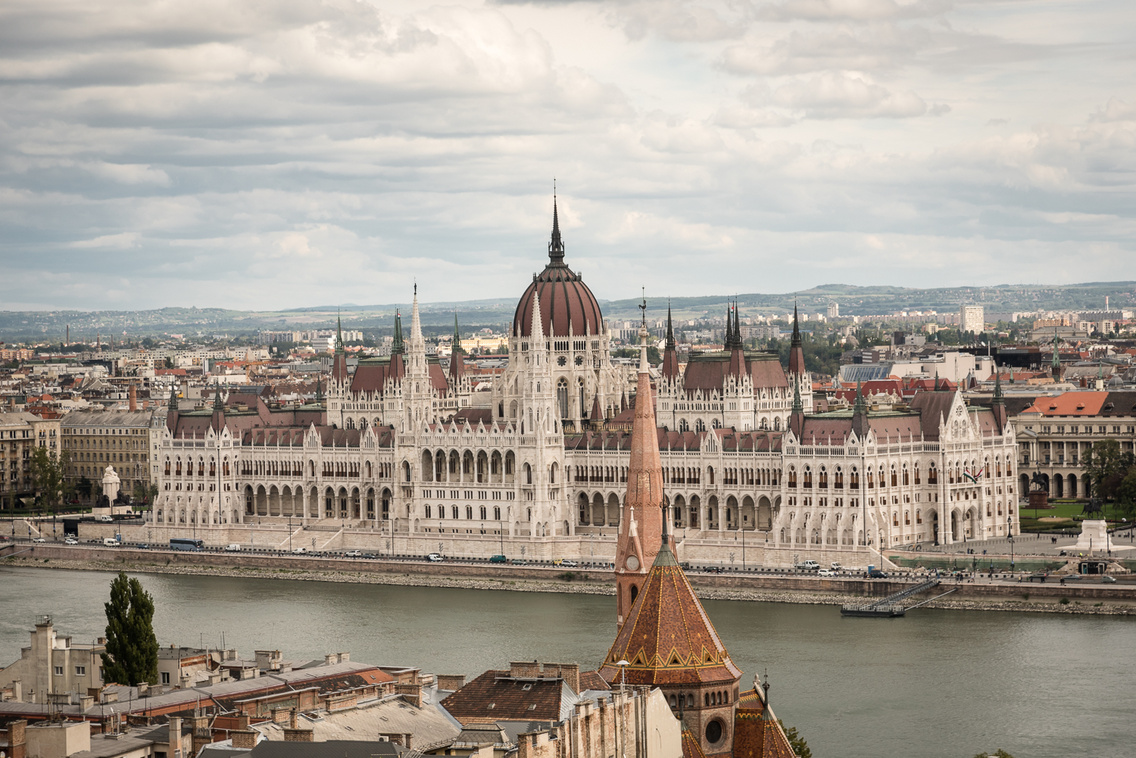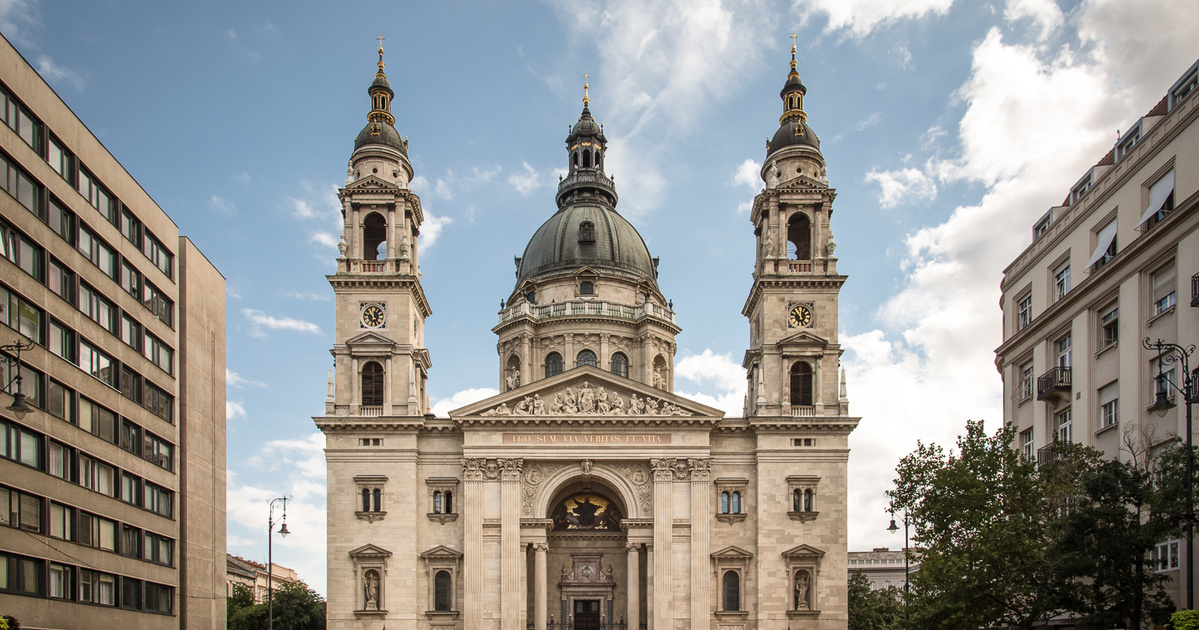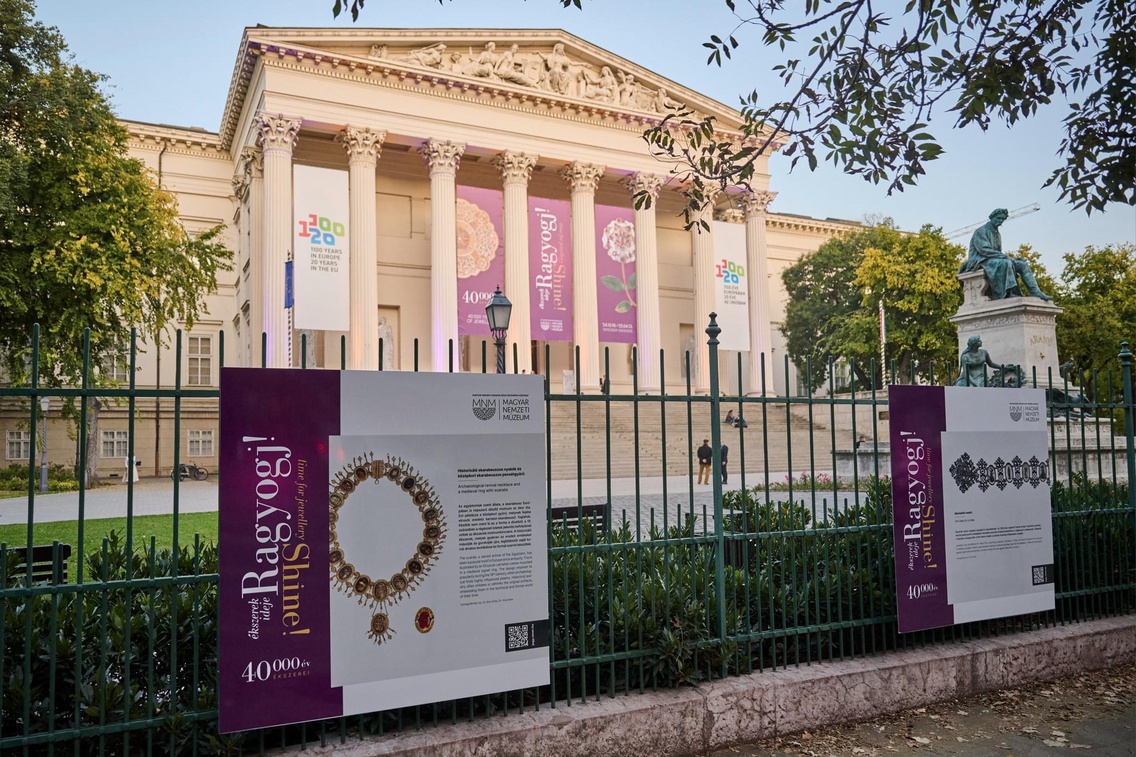Parliament

When you think of Budapest, the Parliament is probably the first landmark that springs to mind. Standing tall and proud on the Danube's bank, it's the tallest building on the Pest side, reaching 96 metres – a nod to Hungary's Millenial celebrations of 1896, when this Neo-Gothic gem was inaugurated. Designed by Imre Steindl, the building boasts 691 rooms (many unused) and 29 grand staircases, frescoes, half a million precious stones, and a dazzling 40 kilograms of gold. Parliament isn't just the seat of government; it also houses the Holy Crown, royal sceptre, and the orb of Hungary's first kings. Guided tours welcome you to explore it.
Details here.
St Stephen's Basilica

Matching the Parliament in height, St Stephen's Basilica holds the title of Budapest's largest church. It missed the big Millenial celebrations, though, only reaching completion in 1905. Locals actually doubted it would ever be finished – planning and construction took 54 years, saw three chief architects, and even the collapse of the dome. Today, the Basilica is a masterpiece that can hold 8 thousand people, with ornate details and vast windows that fill the space with light and reverence. It's a fitting venue for state funerals, and its main aisle houses the famous (and slightly eerie) relic of Hungary's first king, St Stephen's right hand, known as the Holy Dexter. His mummified body rests in the crypt below. One lift whisks you to the treasury, and another to the dome, offering stunning views. The Basilica also hosts recitals and concerts.
Details here.
Hungarian National Museum

Strolling along Budapest's Small Boulevard, you can't miss the majestic Hungarian National Museum, nestled within a charming garden between Kálvin tér and Astoria. Located at the gateway to one of the coolest neighbourhoods in 2024, this Neo-Classical gem from the 1840s is a must-visit for history buffs. According to an urban legend, these steps witnessed Hungarian history in the making when patriotic poet Sándor Petőfi sparked the 1848 Revolution by reciting his Nemzeti dal here. With renovated gardens, complete with a pretty café, striking white Corinthian columns, and a fascinating collection of Hungarian relics, the museum is the perfect place to explore. Visit this winter (or until April 13th), and you'll catch a shiny new exhibition showcasing 40,000 years of jewellery. (x)
Details here.
Gresham Palace

An outstanding example of Central European Art Noveau, the Gresham Palace rises majestically just steps away from the Chain Bridge. Built in 1906 by the Gresham Life Assurance Company and named after the founder of London's Royal Exchange, it initially housed elegant apartments. By the 1940s, it had a rather colourful stint as a cabaret before being occupied by the Red Army. Fast-forward to 2001, when Canadian high-end chain Four Seasons purchased the building, and transformed it into a luxury hotel. Now, you can step into the grand lobby to admire the architectural details before settling down for a chic afternoon tea, sumptuous cocktails, or a top-notch dinner.
Details here.
Matthias Church

The Matthias Church is the second most famous church in Budapest, following St Stephen's Basilica. Its remarkable history dates back to 1015, shortly after Hungary embraced Christianity. Rebuilt in Gothic style in the 14th century, it was renewed in the 19th century and underwent further reconstructions between 2006 and 2013. Over the centuries, this church has worn many hats: a coronation site for Hungarian kings, became a mosque during over 150 years of Ottoman rule, and was home to both Franciscans and Jesuits. Now, it's back to its roots as a Catholic church, filled with life. It hosts holy masses, concerts, and weddings, and attracts thousands of tourists eager to marvel at its storied walls.
Details here.
(Cover photo: Bálint Hirling - We Love Budapest)




